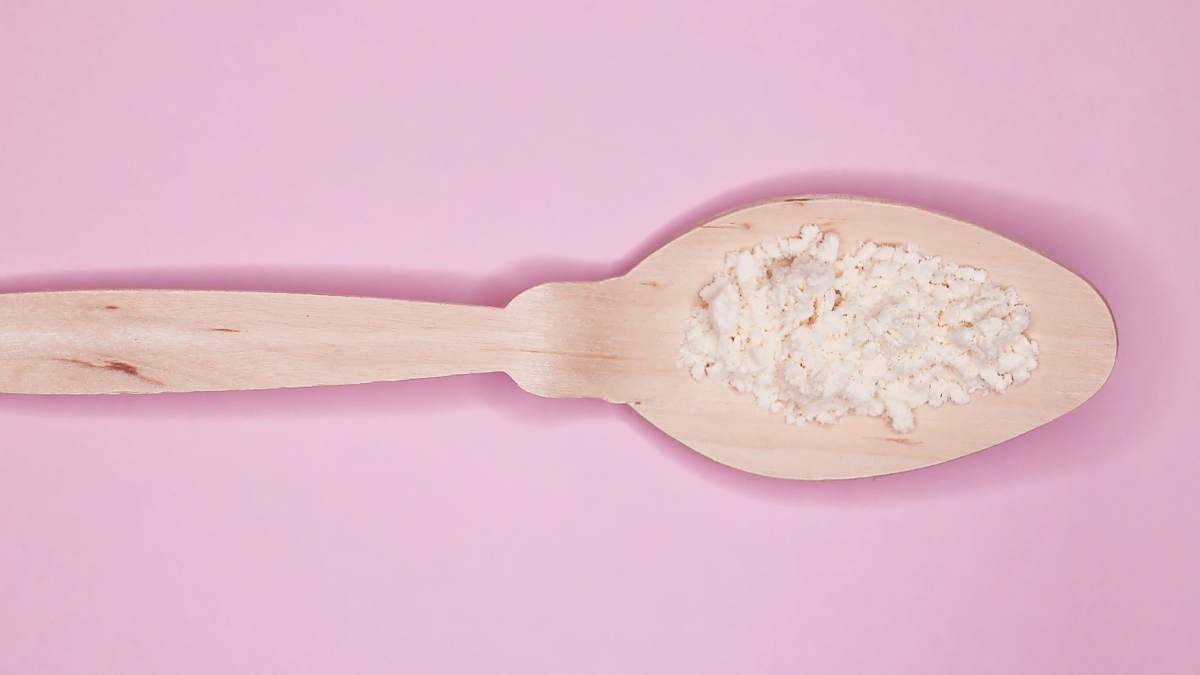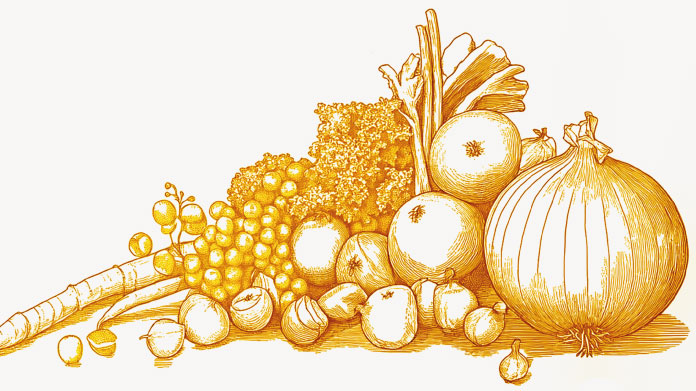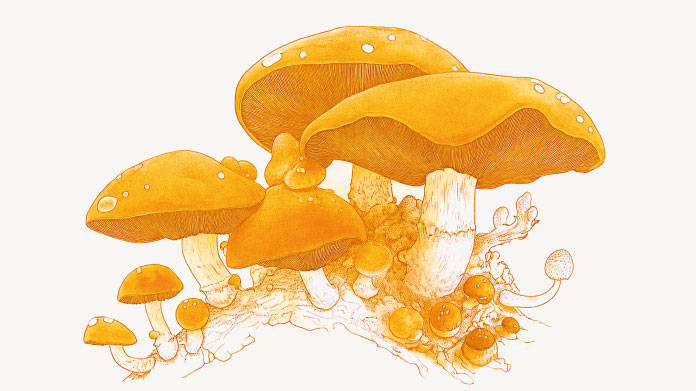Immunity: rediscover the benefits of colostrum, the first form of mother’s milk
For the first one or two days of life, a new-born baby’s nutrition normally comes from colostrum, the first - and highly immunostimulant - form of mother’s milk. How, as adults, can we rediscover the benefits of this exceptional substance?

What exactly is colostrum?
The first milk produced after childbirth
Colostrum is the first milk produced by female mammals at the end of gestation, just after delivery.
This thick fluid, rich in protein and antibodies, offers multiple benefits for the infant. Because of its unique properties and orangey-yellow colour, it is sometimes referred to as ‘golden milk’ or ‘liquid gold’.
A ‘golden milk’ produced for a very short time
This first milk is only available to human new-borns for 24-48 hours after birth. A mother usually produces 50 ml of colostrum during the first day of her baby’s life.
She will subsequently start to lactate and the colostrum will be replaced by ‘normal’ breast milk.
What benefits does this first form of mother’s milk offer?
Colostrum fights infections (viruses, bacteria...)
A powerful anti-infective, colostrum primarily protects the new-born from surrounding germs. In fact, around two-thirds of colostrum cells are white blood cells. (1) These leukocytes produce antibodies responsible for neutralising any viruses and bacteria the baby encounters.
It participates in immune system development
These antibodies or actually immunoglobulins - IgG, IgM and IgA. They will be used for developing the baby’s as yet immature immune system. The type of antibodies present in colostrum depends, understandably, on the infectious agents to which the mother has been exposed during her life.
This first milk helps develop intestinal flora
Colostrum is also ideally suited to the baby’s young digestive system and small stomach. Rich in ‘good’ Lactobacillus bifidus bacteria, it plays an active role in developing a healthy gut microbiota. It also improves digestive function as a whole. (2)
An antioxidant substance rich in vitamins and mineral salts
In addition, this ‘golden milk’ has antioxidant properties (3). And to top it all, it also contains:
- fatty acids, in particular, long-chain fatty acids;
- vitamins (including vitamin A which is important for healthy vision, skin and immune defences) (4-5) ;
- andminerals (magnesium which is good for the cardiovascular system and bones, zinc and copper which help improve immunity, etc.) (6)
Colostrum is thus a veritable treasure trove of nutrients and energy. It’s worth noting that normal breast milk contains more sugar, calories and fat, since it’s primarily designed to ensure the baby grows and gains weight.
Colostrum also helps heal the mother’s nipples
To begin with, breastfeeding may cause the mother’s nipples to bleed. Fortunately, colostrum also has powerful healing properties, which are perfect for helping cracked nipples to heal. It’s no exaggeration to say that colostrum boasts an extraordinarily diverse range of powers ...
How can we rediscover these benefits in adulthood?
Nutritionally-rich bovine colostrum
In cattle farming, colostrum is the first milk produced by cows after they have calved. This first milk from dairy cows is in fact particularly rich in protein (14% compared with 3.2 % in ordinary cow’s milk) and antibodies (6%).
Liquid gold available in supplement form
This highly beneficial colostrum is also suitable for human ingestion. Indeed, in Eastern Europe, it has long been consumed in its natural state to promote strong immunity.
Nowadays, for reasons of health and practicality, bovine colostrum is normally dehydrated and converted into powder and mostly taken in supplement form.
What benefits does a bovine colostrum supplement offer?
Super-versatile immunostimulant
Bovine colostrum supplements enable adults to rediscover the many benefits they enjoyed as new-born babies … but that’s not all.
Bovine colostrum is actually packed with:
- immunoglobulins - IgG, IgA, IgM, Ige and IgD, proteins that are highly effective against pathogens;
- cytokines, key immune response mediators;
- lactoferrin, a glycoprotein that ‘traps’ iron thus depriving bacteria of their preferred source of food;
- IGF-1 (insulin-like growth factor), a peptide hormone that helps increase muscle mass in adults;
- lactalbumin, a protein rich in essential amino acids ...
Bovine colostrum fights respiratory diseases and influenza
Numerous scientific studies have shown that bovine colostrum is able to stimulate immune defences in humans. One such study in 2015 stated that humans benefit from the many antimicrobial and pro-immunity properties of this extraordinary health food (7).
In addition, several studies have shown that bovine colostrum supplementation helps to fight infections of the upper respiratory tract. (8-9) One Italian study showed that taking colostrum (for a period of two months) helped prevent flu and its complications more effectively than vaccination. (10)
It also supports gastrointestinal health
Bovine immunoglobulins have also been shown to prevent infections of the gastrointestinal tract(11). Indeed, in their conclusion, the authors of one study encouraged the use of colostrum-based supplements to combat gastrointestinal problems(12).
Extraordinarily rich in vitamins and minerals
Like its human counterpart, bovine colostrum is rich in nutrients and trace-elements. In particular, it contains:
- vitamins A, B2, B9, B12, D3...
- minerals (magnesium, potassium, zinc and calcium) essential for, amongst others, metabolism and bone health (13-15)
Which colostrum supplement should you choose?
A supplement with a high concentration of immunoglobulins
Are you looking for a completely natural substance to help boost your immune defences? When it comes to bovine colostrum, we’d strongly recommend the supplement Colostrum. Standardised to 30% IgG immunoglobulins, this nutritional supplement’s high content of antibodies, vitamins and minerals is guaranteed to deliver satisfaction. You’ll find it invaluable for boosting your immunity.
Lactoferrin: an active ingredient in colostrum
If you want to focus on a particular component of colostrum, we’d steer you towards lactoferrin, one of the most active compounds in bovine colostrum. As mentioned previously, this compound is able to bind to iron and in so doing, it deprives bacteria and corrupted cells of a crucial source of energy. You’ll find this excellent anti-infective in the supplement Lactoferrin.
Two synergistic supplements: essential oils and wild mushroom
Whether you opt for Colostrum or Lactoferrin, we’d also suggest two other supplements that can be taken at the same tim:
- Defense Mix, an impressive blend of anti-microbial essential oils (oregano, peppermint, cinnamon and lemon);
- and Organic Turkey Tail, an organic wild mushroom extract that stimulates immunity. So called because of its fanned-out shape and distinctive colouring, this mushroom is rich in PSP and PSK polysaccharides. It is widely used in Asia for its immunostimulant effects and as an adjunct treatment in cancer therapy.
Both these supplements will also be effective at helping to stimulate your immune system.
References
- Hassiotou F, Hepworth AR, Metzger P, et al. Maternal and infant infections stimulate a rapid leukocyte response in breastmilk. Clin Transl Immunology. 2013;2(4):e3. Published 2013 Apr 12. doi:10.1038/cti.2013.1
- Pribylova J, Krausova K, Kocourkova I, et al. Colostrum of healthy mothers contains broad spectrum of secretory IgA autoantibodies. J Clin Immunol. 2012;32(6):1372‐1380. doi:10.1007/s10875-012-9733-9
- Buescher ES, McIlheran SM. Antioxidant properties of human colostrum. Pediatr Res. 1988;24(1):14‐19. doi:10.1203/00006450-198807000-00005
- Gilbert C, Foster A. Childhood blindness in the context of VISION 2020--the right to sight. Bull World Health Organ. 2001;79(3):227‐232.
- Bates CJ. Vitamin A. Lancet. 1995;345(8941):31‐35. doi:10.1016/s0140-6736(95)91157-x
- Casey CE, Hambidge KM, Neville MC. Studies in human lactation: zinc, copper, manganese and chromium in human milk in the first month of lactation. Am J Clin Nutr. 1985;41(6):1193‐1200. doi:10.1093/ajcn/41.6.1193
- Bagwe S, Tharappel LJ, Kaur G, Buttar HS. Bovine colostrum: an emerging nutraceutical. J Complement Integr Med. 2015;12(3):175‐185. doi:10.1515/jcim-2014-0039
- Shing CM, Peake J, Suzuki K, et al. Effects of bovine colostrum supplementation on immune variables in highly trained cyclists. J Appl Physiol (1985). 2007;102(3):1113‐1122. doi:10.1152/japplphysiol.00553.2006
- Brinkworth GD, Buckley JD. Concentrated bovine colostrum protein supplementation reduces the incidence of self-reported symptoms of upper respiratory tract infection in adult males. Eur J Nutr. 2003;42(4):228‐232. doi:10.1007/s00394-003-0410-x
- Cesarone MR, Belcaro G, Di Renzo A, et al. Prevention of influenza episodes with colostrum compared with vaccination in healthy and high-risk cardiovascular subjects: the epidemiologic study in San Valentino. Clin Appl Thromb Hemost. 2007;13(2):130‐136. doi:10.1177/1076029606295957
- Ulfman LH, Leusen JHW, Savelkoul HFJ, Warner JO, van Neerven RJJ. Effects of Bovine Immunoglobulins on Immune Function, Allergy, and Infection. Front Nutr. 2018;5:52. Published 2018 Jun 22. doi:10.3389/fnut.2018.00052
- Menchetti L, Traina G, Tomasello G, et al. Potential benefits of colostrum in gastrointestinal diseases. Front Biosci (Schol Ed). 2016;8:331‐351. Published 2016 Jun 1. doi:10.2741/s467
- Kelly GS. Bovine colostrums: a review of clinical uses [published correction appears in Altern Med Rev. 2004 Mar;9(1):69]. Altern Med Rev. 2003;8(4):378‐394.
- Puppel K, Gołębiewski M, Grodkowski G, et al. Composition and Factors Affecting Quality of Bovine Colostrum: A Review. Animals (Basel). 2019;9(12):1070. Published 2019 Dec 2. doi:10.3390/ani9121070
- Kehoe SI, Jayarao BM, Heinrichs AJ. A survey of bovine colostrum composition and colostrum management practices on Pennsylvania dairy farms [published correction appears in J Dairy Sci.2008 May;91(5): 2164]. J Dairy Sci. 2007;90(9):4108‐4116. doi:10.3168/jds.2007-0040
15 Days
Reliable delivery
Reliable delivery. Good product.
Viva
29 Days
Great service
Great service
cl
31 Days
Received product promptly and its early…
Received product promptly and its early days but seems to have improved my daughters alertness.
Anandi
41 Days
Amazing
Amazing, great product!
ALEX Sinclair
44 Days
Good products and Swift handling
Good products and Swift handling
Trusted
49 Days
I trust the company's product
I trust the company's products, the quality is trustworthy and the speed of delivery is also appreciated.
NAJIB Malaah
49 Days
Good job.
This company is serious when it comes to serving it's customers. They are fast to send out the orders. Their site is great and easy. Also, they treat their return customers with great deals and discounts. Keep up the good work.
ABDULQADER Jehad
51 Days
I know frech ( level 3 of 6) and can…
I know frech ( level 3 of 6) and can read your messages, but since order are official documents I'd like to have this in english. Merci Ursula Mathes
Ursula Mathes
54 Days
I worried the delivery.
Box was intact, content correct but delivery time was 12 days. I started to worry!
VIITANEN Esa
57 Days
Supply of Chondroitin 6-sulphate
The company has provided the required product efficiently with no complications.
OldBear
58 Days
Supersmart sell a lot of interesting…
Supersmart sell a lot of interesting stuff. More than jut the usual vitamins though they do all those as well. Ordering pretty straightforward - you may need to try a couple of times to get the offers to apply but they do work. I queried something and had a fairly quick sensible reply. Postage takes a couple if days but you do get good progress information. Very well packed. Bought from Supersmart a few times and will do so again.
AT Griffin
12 Days
Excellent
On m'a mis bien.
cliente
15 Days
qualité des produits et services
qualité des produits et services
denis riegel
16 Days
Nehme das Produkt noch zu kurz um eine…
Nehme das Produkt noch zu kurz um eine Bewertung abgeben zu können
Ermelinde
17 Days
Très satisfait
J'apprécie la facilité de navigation sur le site, le suivi des commandes, et bien sûr, la qualité des compléments alimentaires.
LE COUR SERGE



